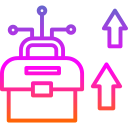Where Nanotech Jobs Are Emerging
Tech transfer offices, pilot lines, and scale-up facilities increasingly hire process engineers, characterization scientists, and reliability specialists who can turn papers into production. If you have experience optimizing recipes or yield, highlight those wins, and subscribe for upcoming case studies on successful lab-to-fab transitions.
Where Nanotech Jobs Are Emerging
Drug delivery platforms, nano-enabled imaging, and point-of-care diagnostics are creating roles in formulation, quality assurance, and regulatory liaison. Clinicians and engineers collaborate to move nanoparticles from animal models to human trials. Tell us which therapeutic areas you follow, and we will curate hiring leads and trial milestones.
Where Nanotech Jobs Are Emerging
Battery anodes and cathodes, CO2 capture membranes, wear-resistant coatings, and photocatalysts need materials scientists, pilot chemists, and EHS professionals. If you can measure surface area, tune porosity, or improve cycle life, employers are listening. Comment with your materials specialty, and we will feature community success stories.
Where Nanotech Jobs Are Emerging
Lorem ipsum dolor sit amet, consectetur adipiscing elit. Ut elit tellus, luctus nec ullamcorper mattis, pulvinar dapibus leo.




